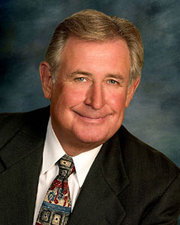Premier (Canada)
|
|
In Canada, a Premier is the head of government of a province. There are currently 10 provincial premiers in Canada.
Name
In a number of provinces they were previously known by the title "Prime Minister" with "premier" being an informal term used to apply to all Prime Ministers, even the Prime Minister of Canada. This practice was eventually phased out to avoid confusing the provincial leaders with the federal Prime Minister, as well as to indicate the distinct nature of the provincial offices. Officially, the last such case outside Quebec was that of W. A. C. Bennett who served as Premier of British Columbia, and styled himself as Prime Minister until leaving office in 1972.
In the provinces of Quebec and New Brunswick, where French is an official language, the head of government is called Premier Ministre in French, as the French language does not use a separate term to distinguish the national Prime Minister from a provincial premier. In Quebec this designation is often translated to Prime Minister in English, especially by Parti Quebecois premiers. The designation however is not exclusive. When they visit Quebec, or when they are described by the Quebec government or many Quebec media, all the other heads of government of the other provinces are also called Prime Minister in the English version of the official French texts. The name of the province is always added, to avoid confusion.
Role
In the ten provinces of Canada, the premier is the leader of the largest political party in the provincial legislature. Nominally, he is appointed by the Lieutenant Governor who represents both the crown and the Federal Government.
Premiers appoint a provincial cabinet and guide legislation through the provincial legislature, of which they are a sitting member.
Premiers hold a fair bit of power within the Canadian federation, especially in regards to the federal government. In many ways they remain the most effective representatives of provincial interests to the federal government, as Parliament's strong party discipline and other factors have impaired provincial representation there. This reality is acknowledged in annual "First Ministers Conferences" in which the federal Prime Minister and the 10 premiers meet to discuss provincial-federal relations. The Meech Lake Accord proposed that these meetings be constitutionally mandated, and some premiers have even proposed that these meetings become a formal branch of government, active in the legislation process (see Council of the Federation (Canada)).
Canada's three territories have premiers as well, though they are technically known as "Government Leaders". The Premier of the Yukon Territory is chosen in the usual fashion, but the Premiers of Nunavut and the Northwest Territories are selected from within the small and non-partisan elected territorial councils.
Related articles
- Council of the Federation (Canada)
- Premier of Alberta
- Premier of British Columbia
- Premier of Manitoba
- Premier of New Brunswick
- Premier of Newfoundland and Labrador
- Premier of the Northwest Territories
- Premier of Nova Scotia
- Premier of Nunavut
- Premier of Ontario
- Premier of Prince Edward Island
- Premier of Quebec
- Premier of Saskatchewan
- Premier of Yukon
| Lists of Canadian first ministers | |
|---|---|
| Federal | Prime Minister |
| Provincial premiers |
Alberta | British Columbia | Manitoba | New Brunswick | Newfoundland and Labrador | Nova Scotia | Ontario | Prince Edward Island | Quebec | Saskatchewan |
| Territorial premiers | |



